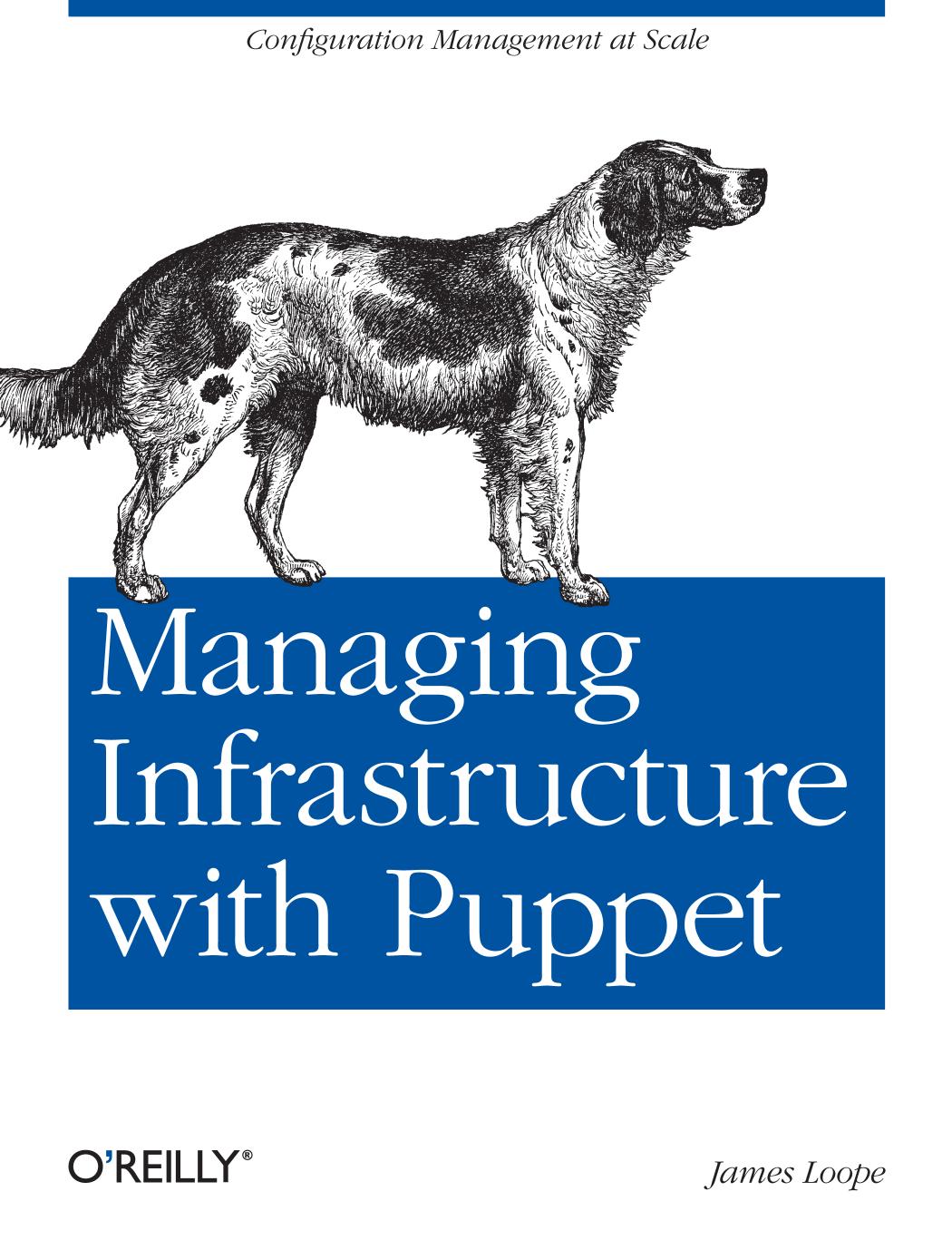Managing Infrastructure with Puppet by James Loope

Author:James Loope
Language: eng
Format: mobi, epub, pdf
Tags: COMPUTERS / System Administration / General
Publisher: O'Reilly Media
Published: 2011-06-09T16:00:00+00:00
file { '/etc/ntp.conf':
mode => '640',
owner => root,
group => root,
source => "puppet:///modules/apps/ntp/ntp.conf",
require => Package[ntp],
}
service { "ntp":
ensure => running,
enable => true,
pattern => 'ntpd',
subscribe => [Package["ntp"], File["/etc/ntp.conf"]],
}
}
With our node defined and importing the ntp class that we’ve written, we can now test out the agent. On the Puppet agent node, run sudo puppetd --test --noop --server puppet.example.com. This will tell the agent to run without daemonizing into the background (--test) and without actually modifying anything (--noop). The first run will not obtain a configuration from the Puppet Master because the agent has not yet been authenticated. It did, however, leave its certificate on the master for inspection. The next step in getting our agent and master talking is to have the Puppet Master sign our agent’s SSL certificate. This initial authentication step is done with the puppetca command. On the Puppet Master, run sudo puppetca -la. This will list all of the certificates in our Puppet Master’s certificate store. Certificates that are signed will have a + in front of them, and unsigned certificates will not. You should see a certificate for your agent that is not yet signed. To sign it, simply run sudo puppetca -sa. This will sign all the outstanding requests and allow those agents to talk to the master.
Download
Managing Infrastructure with Puppet by James Loope.epub
Managing Infrastructure with Puppet by James Loope.pdf
This site does not store any files on its server. We only index and link to content provided by other sites. Please contact the content providers to delete copyright contents if any and email us, we'll remove relevant links or contents immediately.
| Disaster & Recovery | Email Administration |
| Linux & UNIX Administration | Storage & Retrieval |
| Windows Administration |
Sass and Compass in Action by Wynn Netherland Nathan Weizenbaum Chris Eppstein Brandon Mathis(7420)
Grails in Action by Glen Smith Peter Ledbrook(7315)
Kotlin in Action by Dmitry Jemerov(4664)
Management Strategies for the Cloud Revolution: How Cloud Computing Is Transforming Business and Why You Can't Afford to Be Left Behind by Charles Babcock(4143)
The Age of Surveillance Capitalism by Shoshana Zuboff(3439)
Learn Windows PowerShell in a Month of Lunches by Don Jones(3262)
Mastering Azure Security by Mustafa Toroman and Tom Janetscheck(3037)
Mastering Python for Networking and Security by José Manuel Ortega(2977)
Blockchain Basics by Daniel Drescher(2904)
Microsoft 365 Identity and Services Exam Guide MS-100 by Aaron Guilmette(2765)
TCP IP by Todd Lammle(2651)
Configuring Windows Server Hybrid Advanced Services Exam Ref AZ-801 by Chris Gill(2640)
Azure Containers Explained by Wesley Haakman & Richard Hooper(2531)
From CIA to APT: An Introduction to Cyber Security by Edward G. Amoroso & Matthew E. Amoroso(2492)
Hands-On Azure for Developers by Kamil Mrzyglod(2442)
React Native - Building Mobile Apps with JavaScript by Novick Vladimir(2347)
The Social Psychology of Inequality by Unknown(2326)
Combating Crime on the Dark Web by Nearchos Nearchou(2322)
MCSA Windows Server 2016 Study Guide: Exam 70-740 by William Panek(2321)
